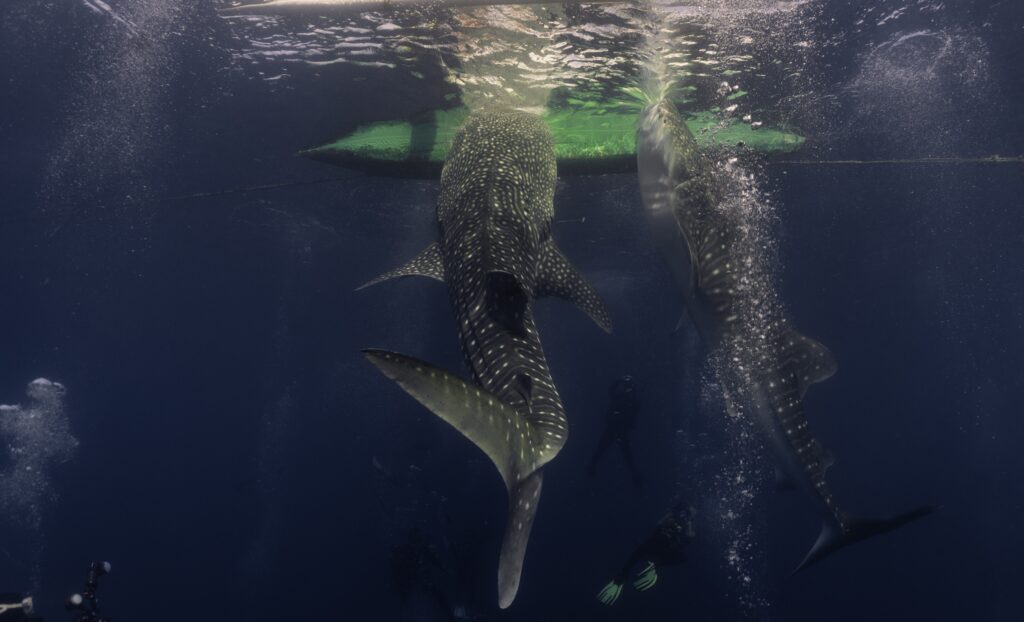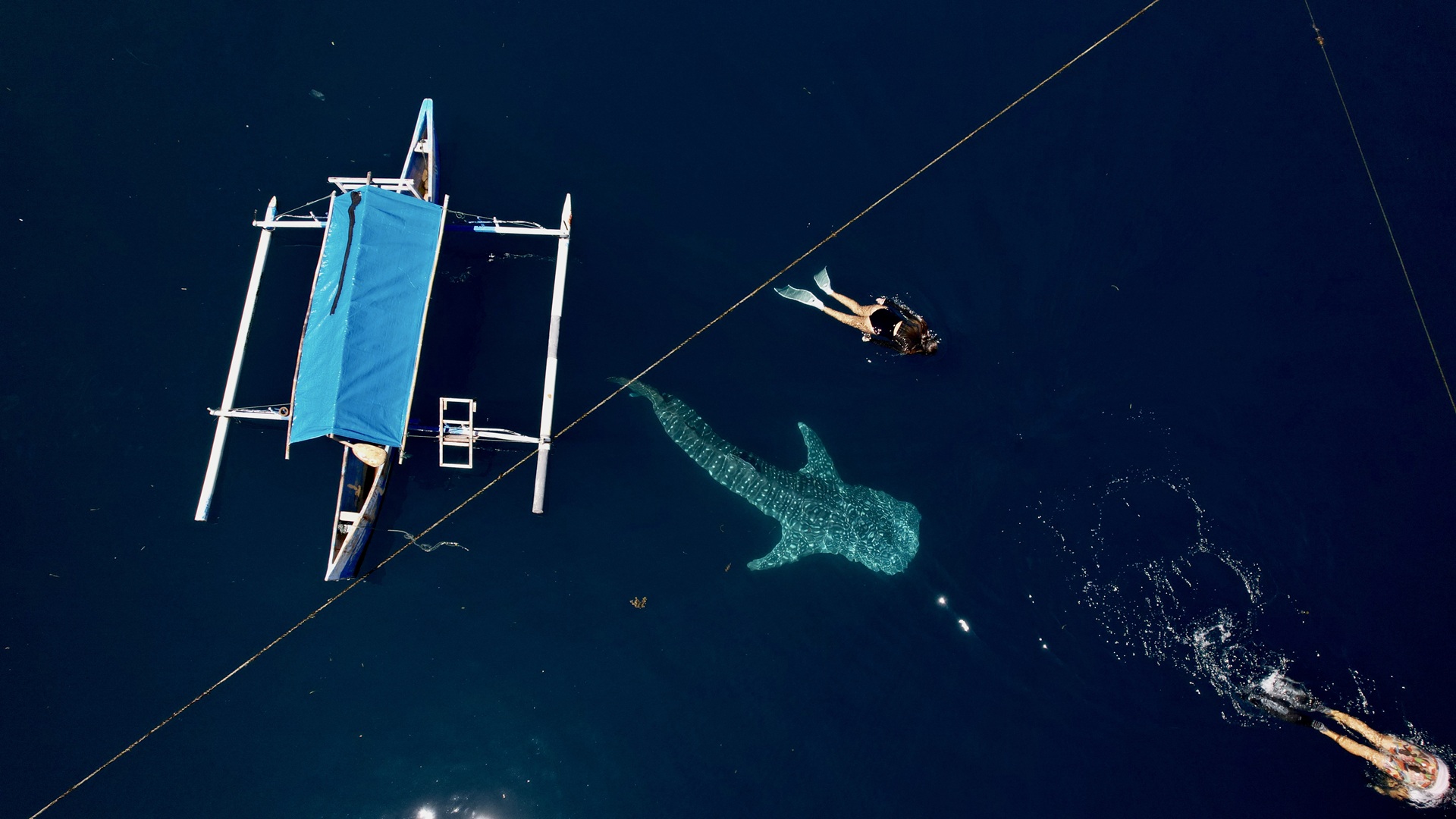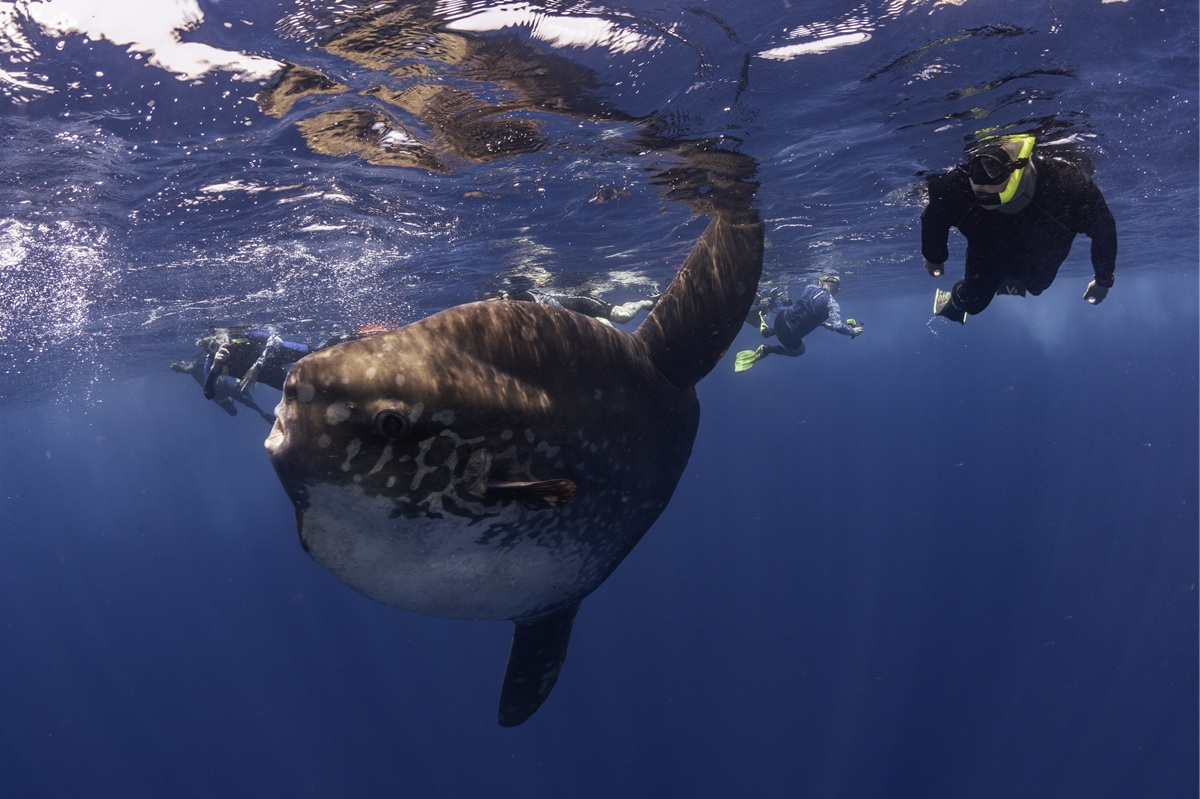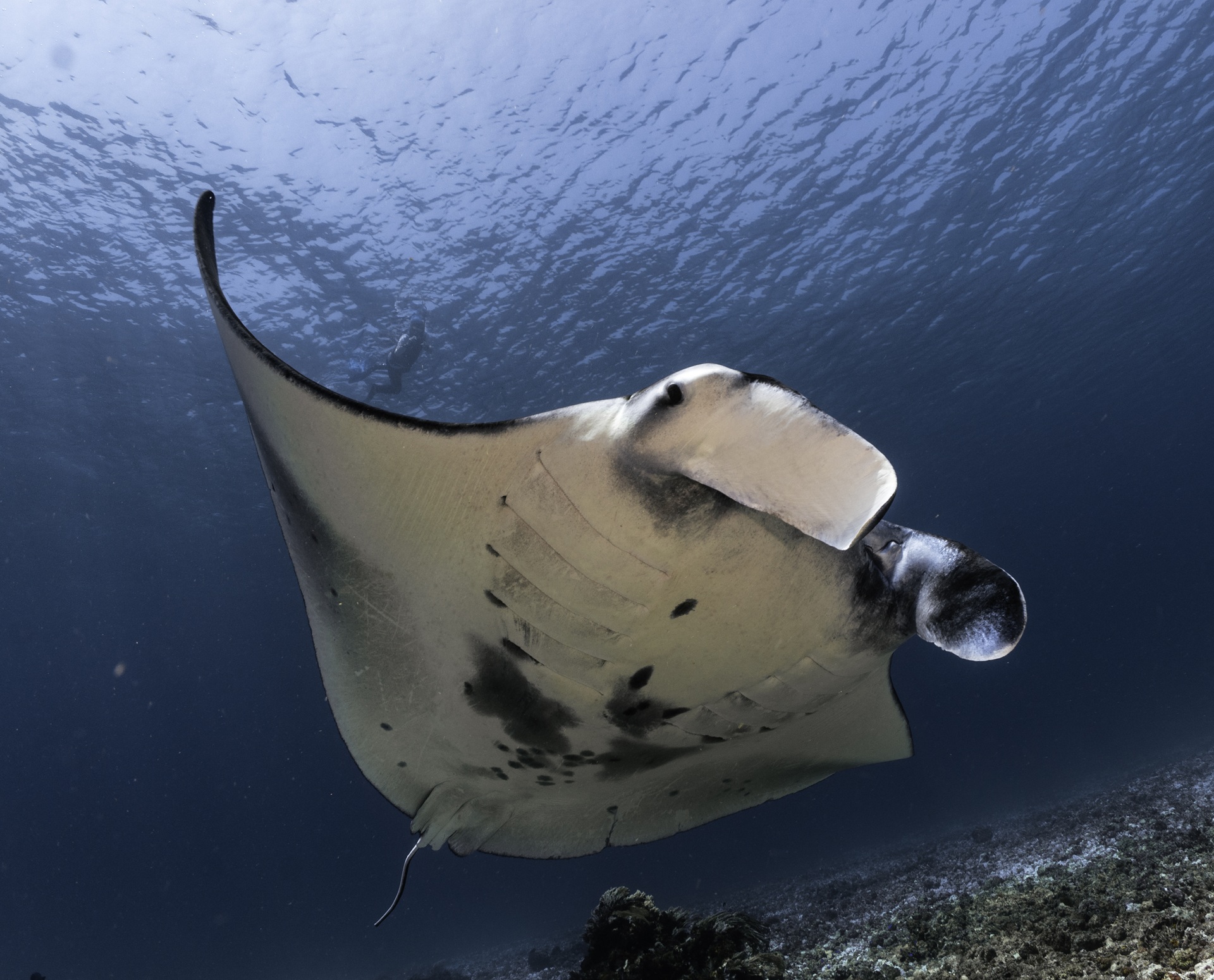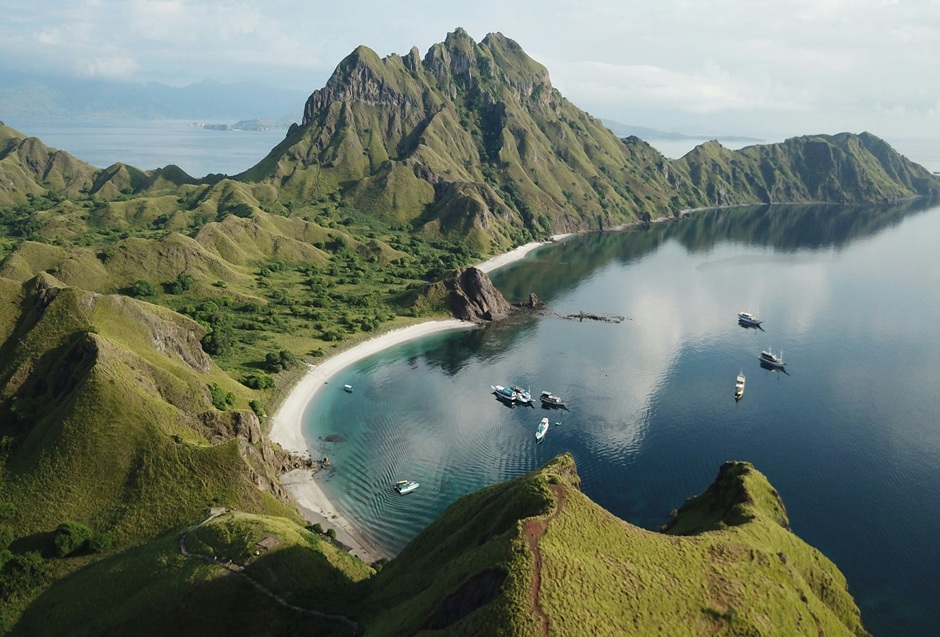Snorkeling with Whale Sharks in Indonesia: Up Close with the Ocean’s Largest Fish
To float just meters above a creature the size of a small bus — calm, powerful, and patterned with starlike spots — is something few people forget. Whale sharks, the largest fish in the sea, inspire awe not with speed or aggression, but with their sheer scale and quiet presence. And in Indonesia, this once-in-a-lifetime experience can happen more often than you’d expect.
In several regions across the archipelago, whale sharks regularly rise to the surface to feed — creating ideal conditions for snorkelers to observe them safely and respectfully. From the remote waters of Sumbawa to the blue bays of Papua and Sulawesi, Indonesia is one of the world’s most remarkable places to swim with these extraordinary creatures.
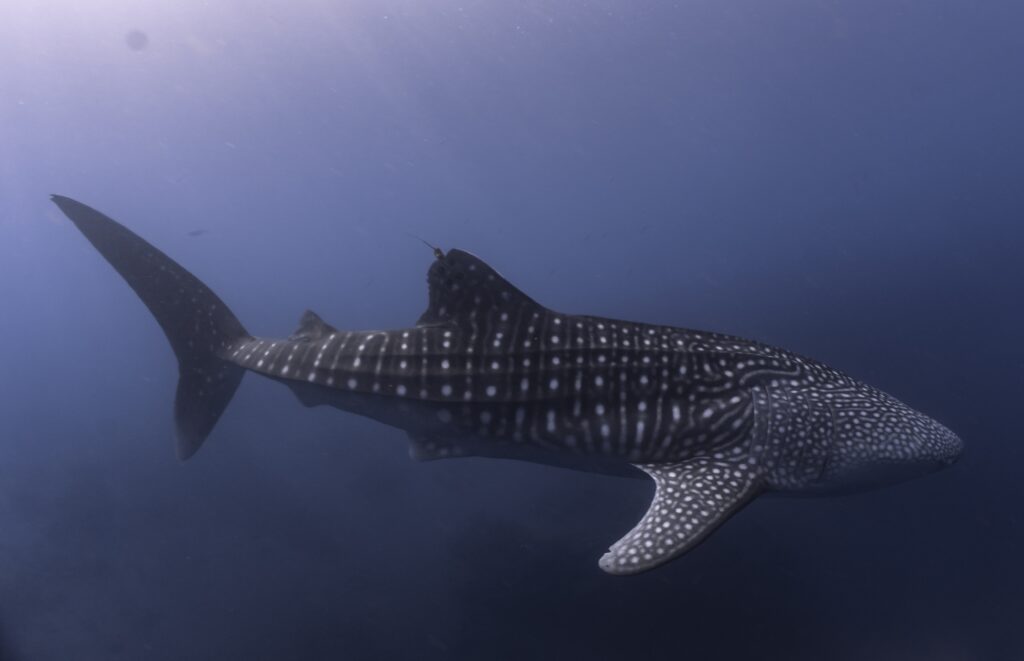
Spotted Giants of the Blue
Despite their name, whale sharks (Rhincodon typus) are not whales at all — but rather the largest species of shark and fish on Earth. They can grow up to 12 meters long, weigh several tons, and live for over 70 years.
Their feeding style is slow and graceful. Whale sharks filter plankton, small fish, and krill through their gills as they glide near the surface, mouth open wide. Each individual is uniquely marked with a pattern of spots and stripes, much like a fingerprint.
For snorkelers, they pose no danger. They are non-aggressive, filter-feeding giants, uninterested in humans and often indifferent to their presence — as long as they’re treated with respect.
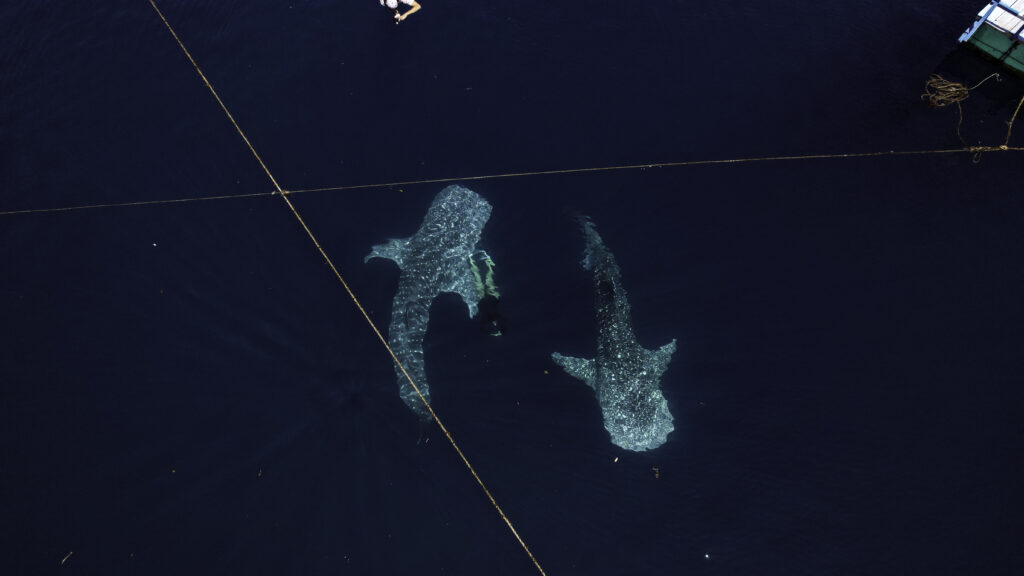
Best Places to Snorkel with Whale Sharks in Indonesia
Saleh Bay, Sumbawa: Consistent, Wild, and Off the Radar
Saleh Bay, located in northern Sumbawa, is one of Indonesia’s most reliable and uncrowded whale shark hotspots. Here, whale sharks gather beneath traditional fishing platforms called bagan, drawn by the small fish attracted to the bright lights at night.
In the early morning, snorkelers can slip into the water and observe these enormous animals feeding calmly around the platforms. Some days you may see just one; other days, two or three glide beneath you in slow circles.
- Whale sharks are present almost year-round in Saleh Bay.
- The calm, clear waters and predictable behavior make it ideal for snorkeling.
- With few visitors and a remote setting, encounters here feel unfiltered and intimate.
Liveaboards offer the best access, allowing early-morning sessions before day boats arrive and flexibility to explore nearby reefs and coastlines.
Cendrawasih Bay, Papua: The Original Hotspot
Cendrawasih Bay, in northern Papua, is Indonesia’s best-known whale shark destination. As in Sumbawa, the sharks gather around bagan platforms to feed on baitfish.
The area is remote, wild, and absolutely stunning — often visited by liveaboards that combine whale shark snorkeling with pristine reef exploration.
- Best time to visit: May to October.
- Expect deep water, excellent visibility, and sometimes multiple sharks at once.
Due to its isolation, Cendrawasih Bay is a destination for committed adventurers — but those who make the journey are richly rewarded.
Gorontalo, Sulawesi: A Seasonal Secret
From December to April, whale sharks are occasionally spotted near the cliffs and bays of Gorontalo, along Sulawesi’s northern coastline. These encounters are less consistent, but they do happen — particularly when plankton blooms attract pelagic life close to shore.
While not a guaranteed destination, Gorontalo offers potential for a magical encounter, especially during the early months of the year.
Snorkeling Etiquette: How to Swim Responsibly with Whale Sharks
Seeing a whale shark in the wild is a gift — but it comes with responsibility. These protected animals are vulnerable to stress and injury when not approached correctly. Always follow these guidelines:
- Keep your distance. Stay at least 3–4 meters from the head and 6 meters from the tail.
- Never touch or ride. Physical contact damages their sensitive skin and alters behavior.
- Approach slowly and from the side. Avoid blocking their path or diving down from above.
- Limit your time in the water. Spend no more than 30 minutes near an individual animal.
- Don’t feed or lure. Let natural behaviors unfold without interference.
- No flash photography. Use natural light and move gently.
Following these basic principles helps ensure whale sharks remain calm, unthreatened, and willing to return to these locations — not just for you, but for future visitors as well.
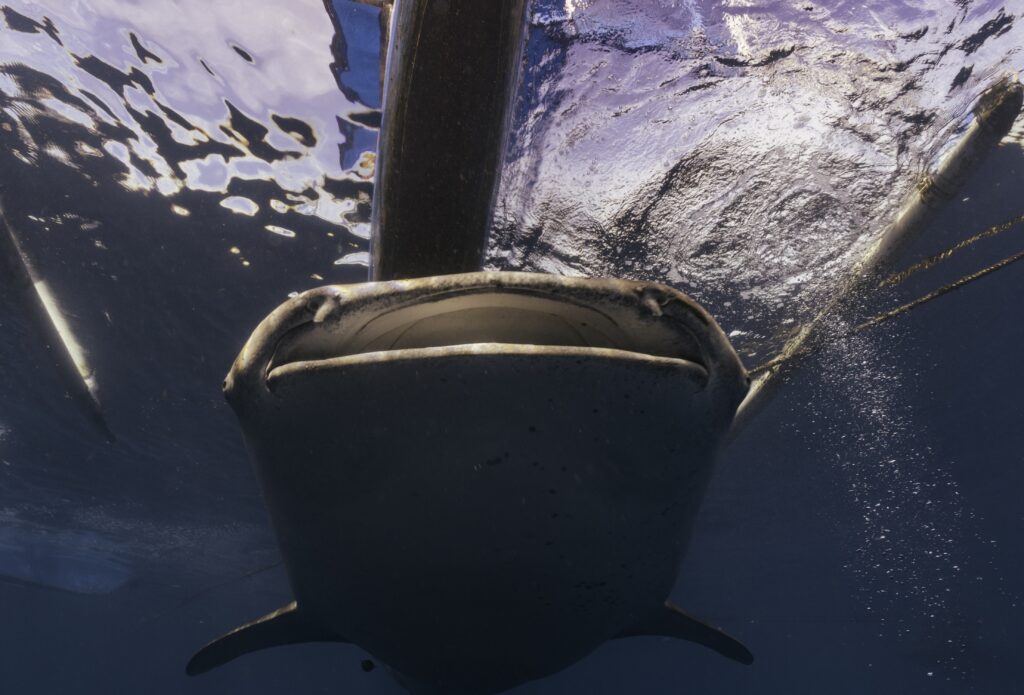
Best Time to Go
Why a Liveaboard Is the Best Way to Experience It
While day trips are possible in some regions, liveaboards offer the most rewarding whale shark experiences. They allow you to:
- Be on location at dawn, when sharks are most active
- Avoid crowded platforms and maximize time in the water
- Explore nearby reefs, islands, and cultural sites along the way
- Enjoy comfort, privacy, and flexible scheduling over multiple days
Recommended Option: Komodo Dragon Liveaboards includes Saleh Bay on select itineraries, combining whale shark snorkeling with remote reef exploration. Their traditional wooden vessels, experienced guides, and snorkeling-first approach make them an ideal choice for this extraordinary experience.
Final Thoughts
Snorkeling with a whale shark is unlike any other wildlife encounter. Their size alone leaves you speechless — but it’s their slow, serene movement that stays with you long after you’ve left the water.
Indonesia offers one of the best chances in the world to witness this. And whether you’re floating in the quiet bays of Sumbawa or scanning the blue beneath a bagan in Papua, the moment when a whale shark rises from the deep is one you’ll carry forever.
Take your time. Stay still. And when the shadow appears, let the ocean show you just how vast — and peaceful — it can be.
